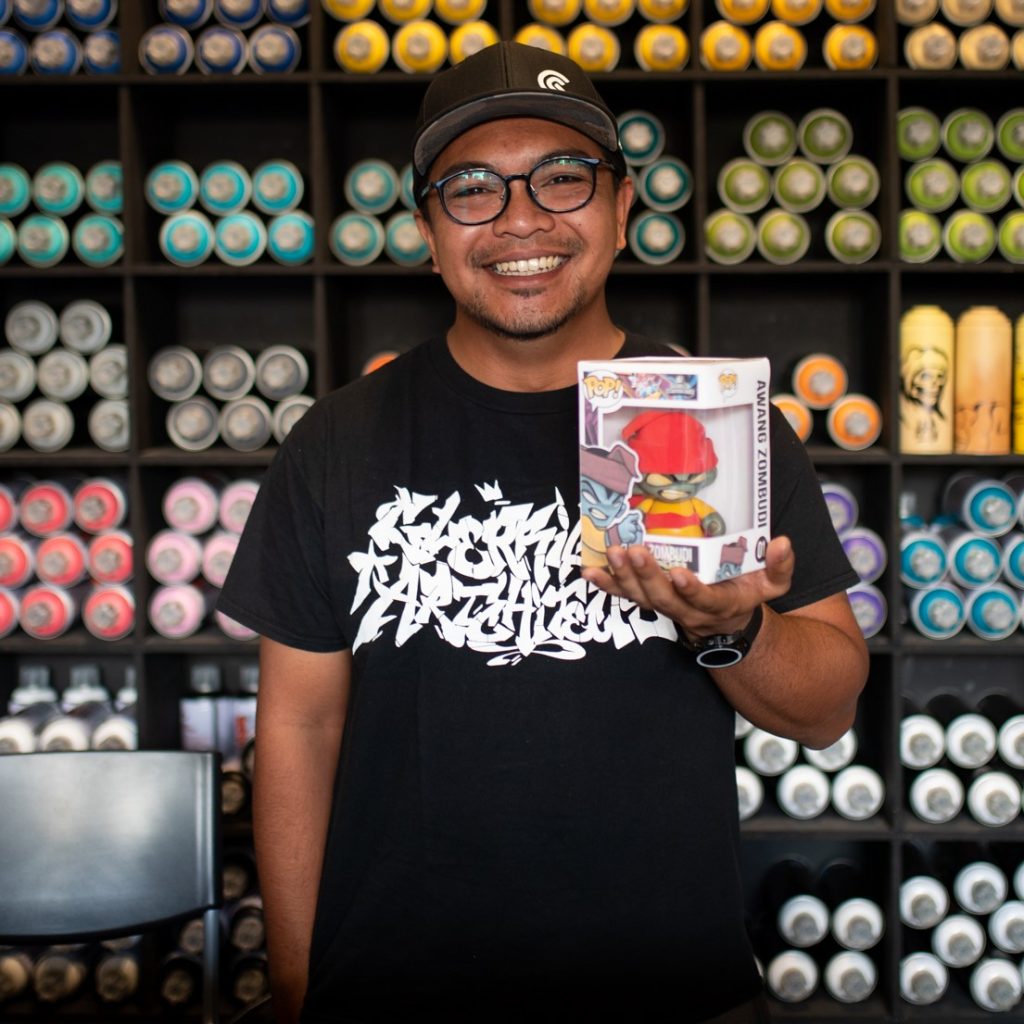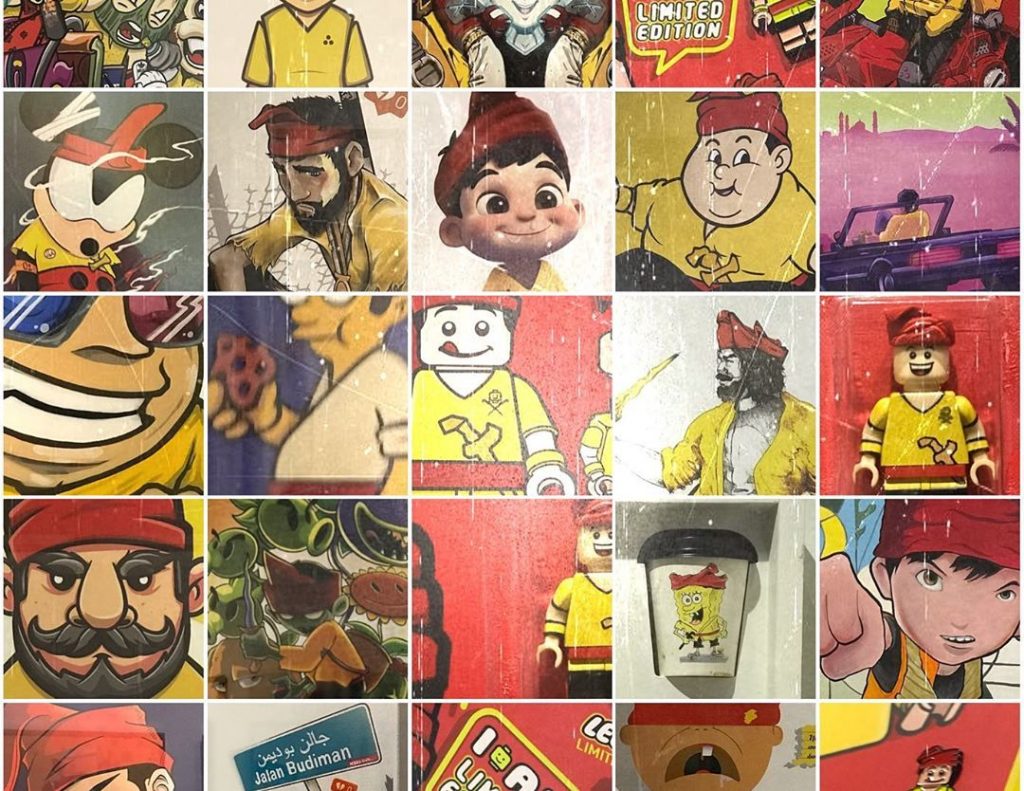In most artistic descriptions, graffiti is defined by its illegality – art that’s done without permission on walls and other surfaces within public view.
With the advent of modern graffiti in the 1970s making use of aerosol spray paint, graffiti was viewed as vandalism and defacement by its detractors, before experiencing a gradual turnaround amongst the public, some who grew to appreciate its spontaneous nature, bold aesthetics and social messaging.
In Brunei, those who embrace the graffiti aesthetic point to Madsuki @ Tycal as the genre’s pioneer – who in 2018 gave his blessing to a newer generation of street artists to use the name Guerrilla Artchitects (GA) as their brand – a term he coined back in 1999 when he began practicing with two other friends.
20 years on, practitioners of the genre in the sultanate – once viewed as outsiders within the art industry – are increasingly sought after by schools, government agencies and businesses to produce mural art, with GA emerging as the pre-eminent provider, securing over 30 commercial projects since the start of the year.

Zaim Norzaini @ Spazy 
Azim Bahar @ Mags01 
Qawiem Mohadi @ Wicked01 
Lufti Tarip @ n3rd1nk 
Zukhairi Matzin @ Mad Nycer 
Ariff Suhaimi @ Budione
“We continue the skills (of graffiti) of using spray paint but we prefer to use the term street art or mural art for our commercial work,” said Arif Suhaimi, GA’s team lead.
GA’s team of six artists – three who are full-time creatives – have been practicing alongside each other since their teenage years as part of the country’s relatively small graffiti circle.
They are self taught, with their expertise in utilising spray paint giving them a distinct advantage in completing mural art, which often kept by clients as a permanent fixture, indirectly serving as a GA advertisement.
GA’s portfolio of projects covers work for some Brunei’s biggest corporations including Brunei Shell Petroleum and BIBD, established pizzerias Margherita and Pizza Hut, TelBru and the Youth Development Centre.
“Our team has years of practice doing art on a large scale (compared to more traditional painting-based art) so we’re able to consistently deliver on whole walls, buildings or any large surface a client wants,” said Arif.
Clients are charged based on the size and complexity of designs as well as the need for HSE requirements such as scaffolding for large murals. Customers typically seek for elements of GA’s “street” aesthetics to be implemented into their design and surroundings, signifying the style’s wider acceptance within the country.
“It’s hard for us point out a turning point to where Brunei corporates started to turn to street or mural art but I believe it could be tied to the popularity of of street art abroad; people see the work in cities like Penang, Kuala Lumpur, Phuket, Yogyakarta and are drawn to it,” said GA’s sales and operations manager Spazy @ Mohd Zaim Hj Mohd Norzairi.
“Over time, our work has become more visible across the country. Whether its our mural installations at (Seria’s) Billionth Barrel Monument or the interiors of local restaurants, when the public sees (and resonates) with our work, it must have also played a role in us being able to find new projects.
“For us at GA, it means the world to us when we’re engaged for designs (even logos) and clients inform us that they want our styling to be present in the work because it shows that they truly value our art and creative input.”

As one of the few private art studios in Brunei, GA has managed to stay afloat during the COVID-19 pandemic by focusing on commissions for mural and design work, while putting plans for exhibitions and public workshops on hold. They also maintained their art shop selling finished pieces, merchandise and spray paint Diton King from Indonesia, who they are the Brunei official distributor for.
GA’s business model has altered significantly since five of their founding members worked under Stain – a street art business that previously occupied their space at Melabau complex in 2016.
Arif credits Stain’s founder Fairuz’ Zabady to laying the foundation by setting up Brunei’s first commercial studio for street art, which GA took over after Stain made the decision to close in 2018.






“We learned so much from Stain; he made the platform and we are very thankful for his experience and the opportunity to carry forward the studio but we needed to approach things in a different way,” said Arif, who financed the setting up of GA.
“On the surface both businesses are similar as we’re involved in street art with a background in graffiti. But while Stain focused on a lot of events and competitions, we’ve chosen to go out and find commission work to survive as a business and provide a stable income for the artists.”
GA is now gearing up for potentially their biggest project yet in Temburong as part of a wider revitalisation plan to develop the district after the opening of the Sultan Haji Omar Ali Saifuddien Bridge.
Should their work be etched onto ageing walls and new landmarks across the district, it would mark a new chapter in Brunei’s art history – one that would forever remember 2020 as the year street art was truly embraced by country’s mainstream.
Watch: Sitting down with the artists behind GA
Captions:











